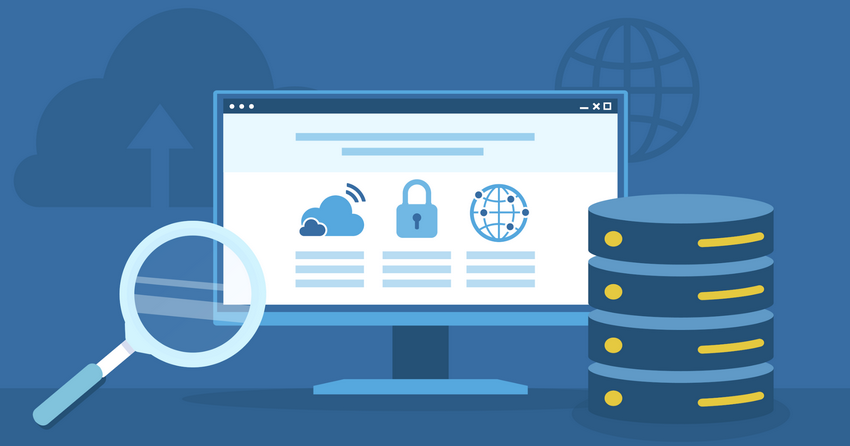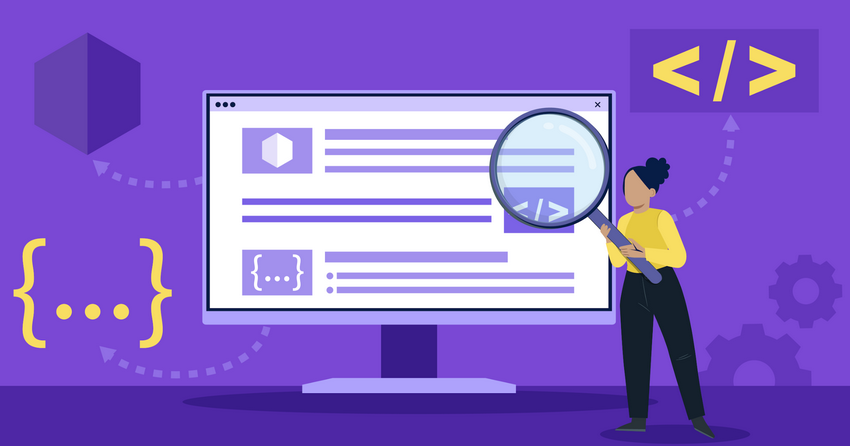Inside this Article
Definition of Web Scraping
Web scraping is a way to automatically collect data from websites and save it in a central location, such as a database or spreadsheet, for later use. This process is also called web data extraction, data scraping, web harvesting, and screen scraping. Scrapers target specific data points and convert them into a structured format, which can be easily analyzed or integrated into other systems. You can think of it like a bot going through all the trouble of copy-pasting large amounts of very specific data for you.How Does Web Scraping Work?
Web scraping involves sending requests, parsing data, saving it, and repeating these steps until you’ve collected all the information you need. Here’s how it works:1. Making an HTTP Request
The first step involves sending a GET request to the desired webpage’s URL. This request pulls the HTML content of the page, and is the basis for all further data extraction. For most sites, this will be the publicly available webpage, but some may require you to log in first. In some cases, you might need to use a POST request instead, especially if the website requires you to submit a form or enter data before showing the content. For instance, if you need to search for products on an e-commerce site, you would use a POST request to send your search terms. You may also need to include headers like cookies or authentication tokens in your request. These headers enable your scraper to simulate a typical user interaction.2. Parsing the HTML Content
Once you have the HTML content, the next step is to parse it to find specific data. Webpages are structured using HTML tags, which contain the raw data you need. You can parse this HTML data in various ways, such as:- Using Regular Expressions to look for particular patterns
- Using HTML Parsers like lxml in Python or JSoup in Java
- CSS selectors using libraries like Beautiful Soup
- Using XPath to navigate through elements and attributes
- Using DOM Parsing to extract the entire structure
3. Saving the Data
After parsing the HTML for the targeted data, you can store it in a useful format. Parsed data is typically organized into a JSON or CSV file. JSON is particularly useful for structured data, especially when working with APIs, while CSV is widely used for data that fits into a tabular format. Alternatively, you can export it into an SQL database for easier management, or pipe it directly into another software system for further processing. You can also consider storing the data in formats like XML if the data needs to be shared with systems that prefer this format. Another approach is to use cloud storage solutions for scalability, especially if you’re dealing with large datasets.4. Optionally Repeating the Above Steps
Webpages often include links to other pages that contain additional relevant information you might need. If so, you can program your scraper to visit each of those links and extract relevant data from them. This method is called recursive scraping and allows you to collect a broader set of information from multiple webpages. Once your scraper has processed all the targeted pages, the scraping process is complete. However, if you’re dealing with data that’s constantly changing, you’ll have to ensure the data remains up to date. To do that, you can configure the scraper to run at regular intervals and replace or append old data. You can also keep both old and new data as separate versions if required.What Type of Data Can You Scrape?
Websites are rich sources of valuable data that businesses can leverage for various purposes. Here are some common types of web data you can scrape:- Product Details: Details like names, prices, descriptions, images, and customer reviews from e-commerce sites or online marketplaces.
- Business Listings: Essential contact information such as business names, addresses, phone numbers, websites, and social media pages, often used for lead generation.
- Financial Data: Key financial indicators including stock prices, market trends, and economic metrics from financial websites.
- Property Listings: Real estate data like location, price, property features, and agent details from real estate websites.
- Job Postings: Information such as job titles, descriptions, company names, salaries, and requirements from job boards.
- Social Media: User engagement metrics, including posts, comments, likes, shares, and follower counts from social media platforms.
- News Articles: Articles, headlines, summaries, publication dates, and author information from news sites.
Common Web Scraping Use Cases
By collecting data from websites, you can gather insights, improve processes, and make better decisions. Here are some common business applications of web scrapers:Price Intelligence
Many businesses use web scraping to monitor competitor pricing and stay competitive. It lets them aggregate and analyze product pricing from various e-commerce sites to gain insights as to how to adjust their prices in real-time based on market conditions. Beyond monitoring competitors, companies can also use web scraping to analyze market trends across entire industries. By collecting pricing data from multiple sources, businesses can identify average price points, detect seasonal variations, and even predict future price movements.Market Research
Web scraping is a powerful tool for market research. Companies can collect large volumes of customer data, reviews, and trends to understand customer sentiments and emerging trends. This data gives them the necessary insight to make key business decisions, such as product development and how to improve customer service. Besides customer insights, web scraping enables companies to analyze regional market differences by collecting data from various geographic locations. For example, a business can scrape data from online stores or regional social media platforms to compare product popularity, pricing variations, and consumer behavior across different areas.Lead Generation
Businesses can use web scraping to automatically collect specific data, such as names, email addresses, phone numbers, and company information, from sources like websites, LinkedIn profiles, and business directories. By focusing on precise criteria, like job titles, industry sectors, location, or company size, scrapers can target leads that align closely with the company’s ideal customer profile. Another valuable use of web scraping for lead generation is gathering intelligence on business events and activities. For example, scraping press releases, news articles, and company announcements can help businesses identify expansion opportunities by launching new products or entering new markets.SEO Monitoring
Web scraping is an effective way to monitor and optimize your website’s SEO performance. You can analyze your content for target keywords, meta descriptions, title tags, and header tags. Similarly, you can identify any broken links and missing meta tags, while analyzing competitors’ SEO strategies to improve upon your own. Another useful way to monitor SEO through web scraping is by analyzing competitor backlinks. By collecting data on where your competitors are getting their backlinks, you can find new opportunities to build your own links. This information can help you discover potential partners or content strategies to improve your website’s authority.Academic Research
Researchers can use web scraping to easily collect data from various online sources, such as forums, social media, news sites, and databases. This allows them to gather large datasets that would be difficult to obtain manually, enabling more comprehensive studies and the ability to produce original research findings at scale.Challenges in Web Scraping
While web scraping opens up exciting possibilities, it comes with its own set of challenges. Here are some key issues to be mindful of:Websites Blocking Scrapers
Many websites have strict anti-scraping policies and actively detect and block web scraping attempts. They may examine the ‘user agent’ or use CAPTCHAs to ensure the request is coming from a regular user instead of a bot. To overcome these blocks you can disguise your scraper as a regular user, use proxy servers, control your crawling rate, or use headless browsers that mimic real user actions. Websites also track request patterns to spot unusual activity, like too many requests in a short time. To bypass this, you can randomize the timing of your requests and use referrer headers that look like those from real users. Some advanced methods include using residential proxies to make your requests look like they’re coming from different real users rather than data centers.Unstructured Data
Webpages might look well-organized to you, but their underlying HTML code can be messy and unstructured. Sites use different structures, tags, and attributes, making it difficult to extract data in a uniform way. To deal with this, you must create custom scripts that understand each site’s unique structure. If a site changes its HTML code, you’ll have to update your scraper to keep it working properly. You can use tools like BeautifulSoup or lxml in Python to handle irregular HTML. These libraries are designed to parse even poorly structured or inconsistent HTML, making it easier to extract the data you need. Adding html5lib can also help when dealing with particularly messy HTML, as it builds a tree structure that mimics how web browsers interpret HTML.Dynamic Content
Many websites use JavaScript to dynamically load content without refreshing the page, meaning the data you see in your browser is not included in the initial HTML response from the server. In such cases, conventional parsing techniques may fail, and you’ll need more advanced tools like a headless browser that can execute JavaScript to scrape the data. A headless browser is a web browser without a visual interface. It runs in the background, allowing scripts to load pages, execute JavaScript, and interact with web elements without displaying anything on the screen. This makes it ideal for scraping dynamic content, as it can render and capture data that conventional methods miss, such as information loaded by JavaScript.Scalability Issues
A web scraper can become resource-intensive if it sends too many requests too quickly across multiple sites. A high crawling frequency can slow down your system and even get your IP address blocked. To prevent this, optimize your scraper to run efficiently, use concurrent scraping techniques, rotate your IP address using proxies, and throttle your request rates.Web Scraping Best Practices
To ensure effective and responsible web scraping, here are some best practices to follow:- Respect Robots.txt: Most sites have a robots.txt file that specifies which pages allow crawling. While following robots.txt is voluntary, ethical scrapers should always honor its directives to avoid potential legal issues.
- Scrape Only Public Data: Scrape only publicly accessible data that is not protected behind a login. Never scrape private user data or any copyrighted material without permission.
- Control Crawling Rate: Introduce delays between requests to reduce the load on servers. If you’re making multiple requests at the same time, do so cautiously without overwhelming the servers.
- Use Proxies and Rotate User Agents: Use a pool of proxy IPs and rotate your user agent strings to avoid getting blocked. Also, distribute your requests across multiple IPs to not get flagged as a bot.
- Cache Scraped Data: Cache data locally to avoid re-scraping the same pages unnecessarily. This reduces the number of requests to a website, minimizing server load and preventing potential blocks.
- Monitor for Changes: Continuously monitor your scraper’s output for errors or inconsistencies, as websites often change their HTML structure. You can also set up alerts to quickly detect and resolve issues when site updates break your scraper.
Web Scraping Tools
There are various tools and libraries available in different programming languages to assist in web scraping. Here are some popular ones:Python Libraries
- Requests: Simplifies sending HTTP requests and retrieving website data.
- BeautifulSoup: Parses and navigates HTML/XML documents, ideal for simple data extraction tasks.
- Scrapy: A framework for large-scale scraping, supporting features like parallel requests and data pipelines.
- Selenium: Automates browsers to interact with dynamic webpages and scrape JavaScript-rendered content.
JavaScript Libraries
- Puppeteer: Controls a headless Chrome browser, ideal for scraping pages that rely heavily on JavaScript.
- Cheerio: A fast and lightweight library for parsing and manipulating HTML using jQuery-like syntax.
- Nightmare: Automates browser actions, suitable for scraping and testing simple websites with a headless browser.
Ruby Libraries
- Nokogiri: Efficiently parses HTML and XML, offering robust tools for data extraction in Ruby.
- Mechanize: Automates form submissions, link following, and page navigation for web scraping in Ruby.
- Watir: Controls web browsers to perform tasks like clicking and form-filling, useful for dynamic content scraping.
Browser Extensions
- Web Scraper (Chrome): A simple point-and-click tool for web scraping suitable for beginners.
- Data Miner (Chrome): Extracts data from webpages without coding, useful for simple scraping tasks.
Cloud-Based Platforms
- ParseHub: A graphical web scraping tool with scheduling and export features, suited for users of all skill levels.
- Octoparse: An enterprise-grade scraping solution with scheduling features, IP rotation, and a visual workflow designer.
- Import.io: Converts web data into structured formats like CSV and JSON, providing tools for data integration.
Legal Considerations in Web Scraping
Web scraping legality varies depending on factors such as a website’s terms of service, the type of data collected, and local laws. Here are some key legal aspects to consider:Terms of Service
Many websites have Terms of Service agreements that explicitly prohibit automated access or scraping. By using these sites, you agree to their terms, and violating them—such as by scraping—can lead to legal consequences even if the data is publicly available.Copyright Infringement
Publicly available data doesn’t mean you have the right to scrape and use it. Most website content is protected by copyright, and scraping it without permission may infringe on their intellectual property rights. Always verify the copyright status of the content before scraping and using it.Trespass to Chattels
In some jurisdictions, excessive web scraping that harm’s a site’s servers or disrupts its services may be treated as “trespass to chattels.” This could lead to civil liability, especially if scraping damages the site’s resources or functionality.Violation of Computer Fraud and Abuse Act (CFAA)
The CFAA is a U.S. law that prohibits unauthorized access to computers. Web scraping that bypasses security measures, such as login pages or CAPTCHAs, can be interpreted as unauthorized access in court. This would violate the CFAA and result in legal penalties.GDPR Compliance
If you’re scraping the personal data of EU citizens, you’ll need to comply with the strict regulations of the General Data Protection Regulation (GDPR). This includes having a lawful basis for data processing, informing individuals about data collection, and protecting their privacy rights.Web Scraping Guidelines
Based on the legal considerations, here are some general guidelines to keep your web scraping ethical:- Read and respect a site’s robots.txt and Terms of Service.
- Don’t scrape any personal or copyrighted data without permission.
- Use reasonable crawling rates and patterns to avoid disrupting a site’s services.
- Comply with all applicable data privacy laws and regulations.
- Consult legal counsel if you’re uncertain about the permissibility of scraping in your location.






